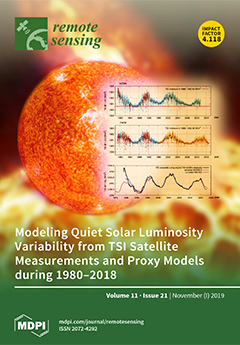Integration of satellite-based data with hydrological modelling was generally conducted via data assimilation or model calibration, and both approaches can enhance streamflow predictions. In this study, we assessed the feasibility of another approach that uses satellite-based soil moisture data to directly estimate the
[...] Read more.
Integration of satellite-based data with hydrological modelling was generally conducted via data assimilation or model calibration, and both approaches can enhance streamflow predictions. In this study, we assessed the feasibility of another approach that uses satellite-based soil moisture data to directly estimate the parameter
to represent the degree of the spatial distribution of soil moisture storage capacity in the semi-distributed Hymod model. The impact of using historical root-zone soil moisture data from the Soil Moisture Active Passive (SMAP) mission on the prior estimation of the parameter
was explored. Two different ways to incorporate the root-zone soil moisture data to estimate the parameter
are proposed, i.e., one is to derive a priori distribution of
, and the other is to derive a fixed value for
. The simulations of the Hymod models employing the two ways to estimate
are compared with the results produced by the original model, i.e., the one without employing satellite-based data to estimate the parameter
, at three study catchments (the Upper Hanjiang River catchment, the Xiangjiang River catchment, and the Ganjiang River catchment). The results illustrate that the two ways to incorporate the SMAP root-zone soil moisture data in order to predetermine the parameter
of the semi-distributed Hymod model both perform well in simulating streamflow during the calibration period, and a slight improvement was found during the validation period. Notably, deriving a fixed
value from satellite soil moisture data can provide better performance for ungauged catchments despite reducing the model freedom degrees due to fixing the
value. It is concluded that the robustness of the Hymod model in predicting the streamflow can be improved when the spatial information of satellite-based soil moisture data is utilized to estimate the parameter
.
Full article





